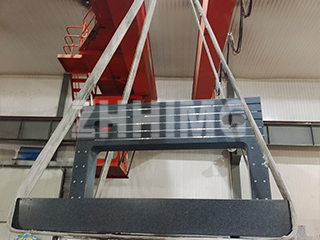Marble surface plates are widely used as precision reference tools in metrology, instrument calibration, and high-accuracy industrial measurements. The meticulous manufacturing process, combined with the natural properties of marble, makes these platforms highly accurate and durable. Because of their delicate construction, proper storage and transport are critical to maintaining their integrity and performance.
Why Marble Surface Plates Require Careful Handling
Marble surface plates undergo complex manufacturing processes that demand precision at every step. Mishandling during storage or shipping can easily compromise their flatness and overall quality, nullifying the effort invested in production. Therefore, careful packaging, temperature control, and gentle handling are essential to preserve their functionality.
Step-by-Step Manufacturing Process
-
Rough Grinding
Initially, the marble plate undergoes rough grinding. This step ensures the thickness and preliminary flatness of the plate are within standard tolerances. -
Semi-Fine Grinding
After rough grinding, the plate is semi-finely ground to remove deeper scratches and further refine the flatness. -
Fine Grinding
Fine grinding enhances the flatness accuracy of the marble surface, preparing it for precision-level finishing. -
Manual Precision Grinding
Skilled technicians perform hand polishing to achieve the target precision. This step ensures the plate meets strict measurement standards. -
Polishing
Finally, the plate is polished to achieve a smooth, wear-resistant surface with minimal roughness, ensuring long-term stability and precision.
Ensuring Accuracy After Transportation
Even after careful manufacturing, environmental factors can affect a marble surface plate’s accuracy. Temperature fluctuations during shipping can alter flatness. It is recommended to place the plate in a stable, room-temperature environment for at least 48 hours before inspection. This allows the plate to acclimate and ensures measurement results closely match the original factory calibration.
Temperature and Usage Considerations
Marble surface plates are sensitive to temperature changes. Direct sunlight, heat sources, or proximity to hot equipment can cause expansion and deformation, affecting measurement precision. For accurate results, measurements should be conducted in a controlled environment, ideally around 20℃ (68°F), ensuring that both the marble plate and the workpiece are at the same temperature.
Storage and Handling Guidelines
-
Always store plates on flat, stable surfaces in a temperature-controlled workshop.
-
Avoid exposing the plate to direct sunlight or heat sources.
-
Handle with care during transportation to prevent impacts or scratches.
Conclusion
The complexity of marble surface plate production reflects the precision required in modern industrial measurements. By following careful manufacturing, handling, and usage practices, these plates maintain their high accuracy and durability, ensuring reliable results for precision measurement tasks worldwide.
Post time: Aug-19-2025

